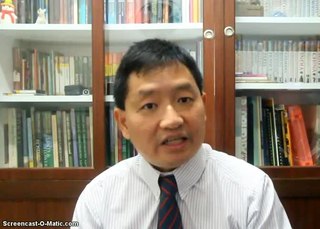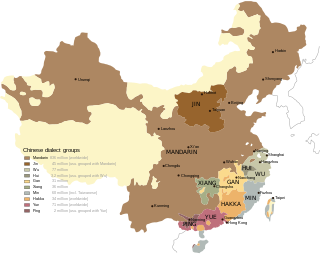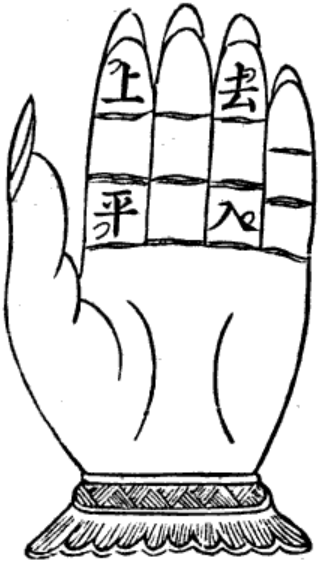Related Research Articles
Dungan is a Sinitic language spoken primarily in Kazakhstan, Russia and Kyrgyzstan by the Dungan people, an ethnic group related to the Hui people of China. Although it is derived from the Central Plains Mandarin of Gansu and Shaanxi, it is written in Cyrillic and contains loanwords and archaisms not found in other modern varieties of Mandarin.

Primorsky Krai, informally known as Primorye, is a federal subject of Russia, located in the Far East region of the country and is a part of the Far Eastern Federal District. The city of Vladivostok is the administrative center of the krai, and the second largest city in the Russian Far East, after Khabarovsk. The krai has the largest economy among the federal subjects in the Russian Far East, and a population of 1,845,165 as of the 2021 Census.

Chinese, also known as Sinitic, is a branch of the Sino-Tibetan language family consisting of hundreds of local varieties, many of which are not mutually intelligible. Variation is particularly strong in the more mountainous southeast part of mainland China. The varieties are typically classified into several groups: Mandarin, Wu, Min, Xiang, Gan, Hakka and Yue, though some varieties remain unclassified. These groups are neither clades nor individual languages defined by mutual intelligibility, but reflect common phonological developments from Middle Chinese.

The Tungusic languages form a language family spoken in Eastern Siberia and Manchuria by Tungusic peoples. Many Tungusic languages are endangered. There are approximately 75,000 native speakers of the dozen living languages of the Tungusic language family. The term "Tungusic" is from an exonym for the Evenk people (Ewenki) used by the Yakuts ("tongus"). It was borrowed into Russian as "тунгус", and ultimately transliterated into English as "Tungus".

The Nanai people are a Tungusic people of East Asia who have traditionally lived along Heilongjiang (Amur), Songhuajiang (Sunggari) and Wusuli River on the Middle Amur Basin. The ancestors of the Nanai were the Wild Jurchens of northernmost Manchuria.

Tuvan or Tyvan is a Turkic language spoken in the Republic of Tuva in South-Central Siberia in Russia. The language has borrowed a great number of roots from the Mongolian language, Tibetan and the Russian language. There are small diaspora groups of Tuvan people that speak distinct dialects of Tuvan in the People's Republic of China and in Mongolia.

Penang Hokkien is a local variant of Hokkien spoken in Penang, Malaysia. It is spoken natively by 63.9% of Penang's Chinese community, and also by some Penangite Indians and Penangite Malays.

Udege are a native people of the Primorsky Krai and Khabarovsk Krai regions in Russia. They live along the tributaries of the Ussuri, Amur, Khungari, and Anyuy Rivers. The Udege speak the Udege language, which belongs to the Tungusic language family. Their religious beliefs include animism, animal worship, and shamanism. The Udege are mainly engaged in hunting, fishing, and ginseng harvesting. According to the 2002 census, there were 1,657 Udege in Russia, a slight increase from 1,500 in 1970. This was down to 1,496 Udege in Russia in the 2010 census. They are one of the closest ethnic groups to the Manchu and Nanai, and are possibly of Xi Yeren Jurchen origin.
General Chinese is a diaphonemic orthography invented by Yuen Ren Chao to represent the pronunciations of all major varieties of Chinese simultaneously. It is "the most complete genuine Chinese diasystem yet published". It can also be used for the Korean, Japanese, and Vietnamese pronunciations of Chinese characters, and challenges the claim that Chinese characters are required for interdialectal communication in written Chinese.

The Sinitic languages (漢語族/汉语族), often synonymous with "Chinese languages", are a group of East Asian analytic languages that constitute the major branch of the Sino-Tibetan language family. It is frequently proposed that there is a primary split between the Sinitic languages and the rest of the family. This view is rejected by a number of researchers but has found phylogenetic support among others. The Greater Bai languages, whose classification is difficult, may be an offshoot of Old Chinese and thus Sinitic; otherwise Sinitic is defined only by the many varieties of Chinese unified by a shared historical background, and usage of the term "Sinitic" may reflect the linguistic view that Chinese constitutes a family of distinct languages, rather than variants of a single language.
Sino-Xenic or Sinoxenic pronunciations are regular systems for reading Chinese characters in Japan, Korea and Vietnam, originating in medieval times and the source of large-scale borrowings of Chinese words into the Japanese, Korean and Vietnamese languages, none of which are genetically related to Chinese. The resulting Sino-Japanese, Sino-Korean and Sino-Vietnamese vocabularies now make up a large part of the lexicons of these languages. The pronunciation systems are used alongside modern varieties of Chinese in historical Chinese phonology, particularly the reconstruction of the sounds of Middle Chinese. Some other languages, such as Hmong–Mien and Kra–Dai languages, also contain large numbers of Chinese loanwords but without the systematic correspondences that characterize Sino-Xenic vocabularies.
Hong Kong Cantonese is a dialect of the Cantonese language of the Sino-Tibetan family.

Northeastern Mandarin is the subgroup of Mandarin varieties spoken in Northeast China with the exception of the Liaodong Peninsula and few enclaves along Amur and Ussuri rivers. The classification of Northeastern Mandarin as a separate dialect group from Beijing Mandarin was first proposed by Li Rong, author of the Language Atlas of China, in 1989. However, many researchers do not accept the distinction.

Tungusic peoples are an ethnolinguistic group formed by the speakers of Tungusic languages. They are native to Siberia and Northeast Asia.
The Nanai language is spoken by the Nanai people in Siberia, and to a much smaller extent in China's Heilongjiang province, where it is known as Hezhe. The language has about 1,400 speakers out of 17,000 ethnic Nanai, but most are also fluent in Russian or Chinese, and mostly use one of those languages for communication.
The Udege language is the language of the Udege people. It is a member of the Tungusic family. It’s a moribund language, and classified as critically endangered by the UNESCO Atlas of the World’s Languages in Danger.

The Taz are a Tungusic and Chinese people who primarily live in Russia. They formed in the 1890s, from intermarriages between Udege, Nanai and Chinese. The Taz speak Russian and Northeast Mandarin, with loanwords from Udege and Nanai.
The Oroch language is a critically endangered language spoken by the Oroch people in Siberia. It is a member of the southern group of the Tungusic languages and is closely related to the Nanai language and Udege language. It is or was spoken in the Khabarovsk Krai. The language is split into three dialects: Tumninsky, Khadinsky, and Hungarisky. At the beginning of the 21st century, a written form of the language was created. The Russian government and the scientific field disagree on whether the language is living or extinct. The Oroch language belongs to the southern subgroup of the Tungus-Manchu languages, which are part of the Altaic family of languages.

The four tones of Chinese poetry and dialectology are four traditional tone classes of Chinese words. They play an important role in Chinese poetry and in comparative studies of tonal development in the modern varieties of Chinese, both in traditional Chinese and in Western linguistics. They correspond to the phonology of Middle Chinese, and are named even or level, rising, departing or going, and entering or checked. They were reconstructed as mid, mid rising, high falling, and mid with a final stop consonant respectively. Due to historic splits and mergers, none of the modern varieties of Chinese have the exact four tones of Middle Chinese, but they are noted in rhyming dictionaries.
The Ersu language proper is a Sino-Tibetan spoken in western Sichuan, China. It is the most widely spoken of the three Ersu languages. There are 13,000 speakers according to Sun (1982).
References
- ↑ "Tazy" Тазы. Etnic.ru (in Russian). Archived from the original on 2020-09-23. Retrieved 2018-10-12.
- 1 2 3 "Natsionalny sostav naseleniya Rossiyskoy federatsii" Национальный состав населения Российской федерации (Table) (in Russian). Archived from the original (XLS) on 2012-04-24. Retrieved 2019-07-06– via perepis-2010.ru.
- 1 2 "Tazy" Тазы. Assotsiatsiya korennykh malochislennykh narodov Severa, Sibiri i Dalnego Vostoka Rossiyskoy Federatsii (AKMNSS i DV RF)Ассоциация коренных малочисленных народов Севера, Сибири и Дальнего Востока Российской Федерации (АКМНСС и ДВ РФ) (in Russian). Archived from the original on 2020-11-16. Retrieved 2018-10-12.
- 1 2 3 4 5 Kazama, Shinjiro 風間 伸次郎; Podmaskin, V.V. [В.В. Подмаскин] (2002). "Tāzu no gengo to bunka" ターズの言語と文化. In Irimoto, Takashi 煎本孝 (ed.). Tōhoku Ajia sho minzoku no bunka dōtai東北アジア諸民族の文化動態 (in Japanese). Sapporo-shi: Hokkaidō Daigaku Toshokankōkai. ISBN 4-8329-6241-8.
- ↑ "Lingvisty popytayutsya sokhranit yazyk tazov" Лингвисты попытаются сохранить язык тазов. NTVНТВ (in Russian). 2005-10-25. Archived from the original on 2020-08-21. Retrieved 2020-04-04.
